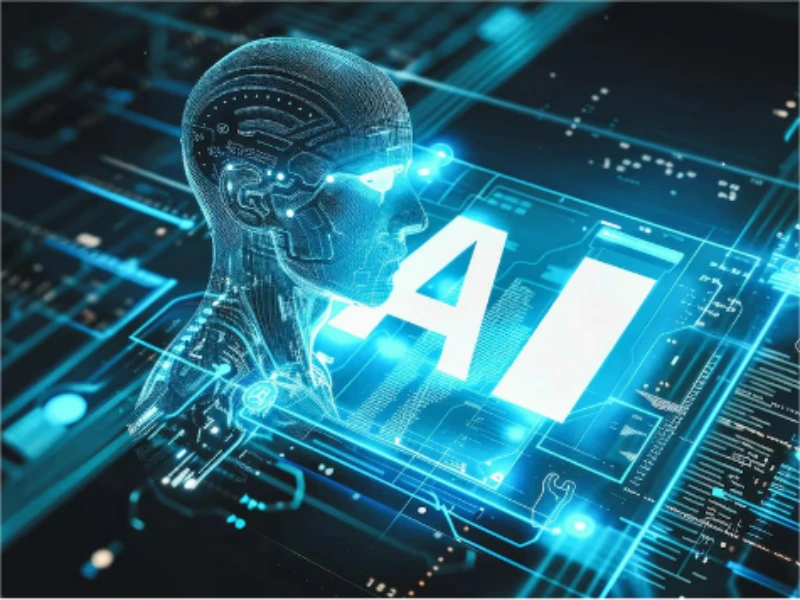- Generative AI models leverage deep learning to autonomously create diverse content, revolutionizing various industries. However, ethical dilemmas, such as copyright and misuse, must be addressed for responsible development and societal harmony.
- Generative AI transforms creative arts and design by enabling artists to produce unique works and solutions, expanding possibilities, enhancing efficiency, and fostering innovation and expression.
- Generative AI tools are pivotal in engineering and problem-solving domains, aiding engineers and scientists in generating diverse design options and solutions, accelerating optimization processes, and innovating in architecture, modeling, and simulation.
OUR TAKE
Generative AI tools are driving innovation and development in many fields by autonomously creating new content, but attention must also be paid to the ethical issues they raise.
–Alaiya Ding, reporter
Generative AI tools autonomously generate content using deep learning techniques, reflecting human creativity. They revolutionize creative arts, software development, music production, and problem-solving. However, ethical concerns regarding copyright and misuse accompany their advancement. Addressing these issues is crucial for responsible AI development and societal balance.
Learning from data and creating
Generative AI tools are complex algorithms that can autonomously generate new content. These models use deep learning techniques to extract features from large amounts of existing data to generate new text, images, music, and code. The key is the algorithm’s ability to self-improve, making the generated content not only highly realistic but also reflect human creativity. These models have a wide range of applications, including natural language processing, computer vision, and sound processing. The development of generative AI models is inseparable from the continuous optimization of machine learning algorithms and the support of huge amounts of data, which enables them to handle complex generation tasks and create highly innovative content. Applications in Creative Arts and Design.
Also read: Artists fight back against generative AI tools
Also read: Adobe Premiere Pro’s generative AI tools make video editing easier
Also read: What is an AI tool?
Generative AI that imitates human creativity
Generative AI tools imitate human creativity with their outstanding creativity and imagination, and can generate realistic and diverse output content. Their continuous progress and innovation make people full of confidence in the application prospects of AI technology.
Also read: Hitachi signs $18.9B generative AI partnership with Microsoft
Also read: Meta bans Israeli firm for AI-generated deceptive content
Applications in creative arts and design
Generative AI tools have revolutionized the creative arts and design industry. Artists and designers use these tools to generate unique artworks and design solutions. Generative AI can create new artworks based on the input art style and design elements, which brings endless possibilities to artistic creation. For example, AI-generated paintings can imitate different art genres, and designers can quickly generate a variety of design sketches to choose from. This not only improves creative efficiency, but also expands the boundaries of artistic creation, allowing artists to focus more on innovation and expression.
Revolutionizing software development: From coding to automation
In the field of software development, generative AI tools are changing the traditional way of coding. These tools can automatically generate code snippets to help developers quickly build applications. By learning from a large number of open source code bases, generative AI can identify common coding patterns and best practices to generate high-quality code. In addition, generative AI can also automatically review and optimize code, reducing the workload of manual debugging. The application of this technology not only improves development efficiency, but also reduces the possibility of errors, making the software development process more efficient and reliable.
New frontiers in music and audio production
Generative AI has shown great potential in music and audio production. Musicians and producers use AI tools to create new music, generate sound effects, and remix. AI can analyse existing music works, learn their structure and style, and generate new music pieces. This brings new inspiration and possibilities to music creation, allowing artists to explore different musical styles and sound combinations. For example, AI-generated music can be used to make movie soundtracks, advertising background music, and video game soundtracks, broadening the application scenarios of music production.
Innovative applications in engineering and problem solving
Generative AI tools also play an important role in the fields of engineering and problem solving. Engineers and scientists can use these tools to generate new design options and solutions. By simulating different design parameters and conditions, AI can quickly generate a variety of options for selection, thereby speeding up the design and optimization process. For example, in architectural design, AI can generate different building structures and layout options to improve design efficiency and accuracy. Generative AI can also be used for modeling and simulation of complex problems, providing innovative solutions and methods.
Diverse and realistic outputs
One of the hallmark features of generative AI tools is their ability to produce outputs that are both diverse and highly realistic. From generating lifelike images and music compositions to crafting compelling pieces of text and code, these tools have demonstrated an unparalleled capacity for creativity. The outputs generated by generative AI often rival those produced by humans, blurring the lines between artificial and human creativity. This versatility and realism make generative AI tools invaluable assets across a wide range of applications, from entertainment and marketing to education and research.
Looking to the future
The infinite possibilities and ethical considerations of generative AI. The future prospects of generative AI are broad, but its development is also accompanied by a series of ethical issues. With the widespread application of AI-generated content, issues such as copyright, authenticity and abuse will gradually emerge. In order to ensure the responsible use of generative AI, developers and policymakers need to formulate corresponding norms and legal frameworks. For example, how to identify and mark AI-generated content, how to protect the rights of original authors, and how to prevent AI from being used for malicious purposes. These issues need to be explored and resolved in depth to balance the relationship between technological innovation and social ethics.

